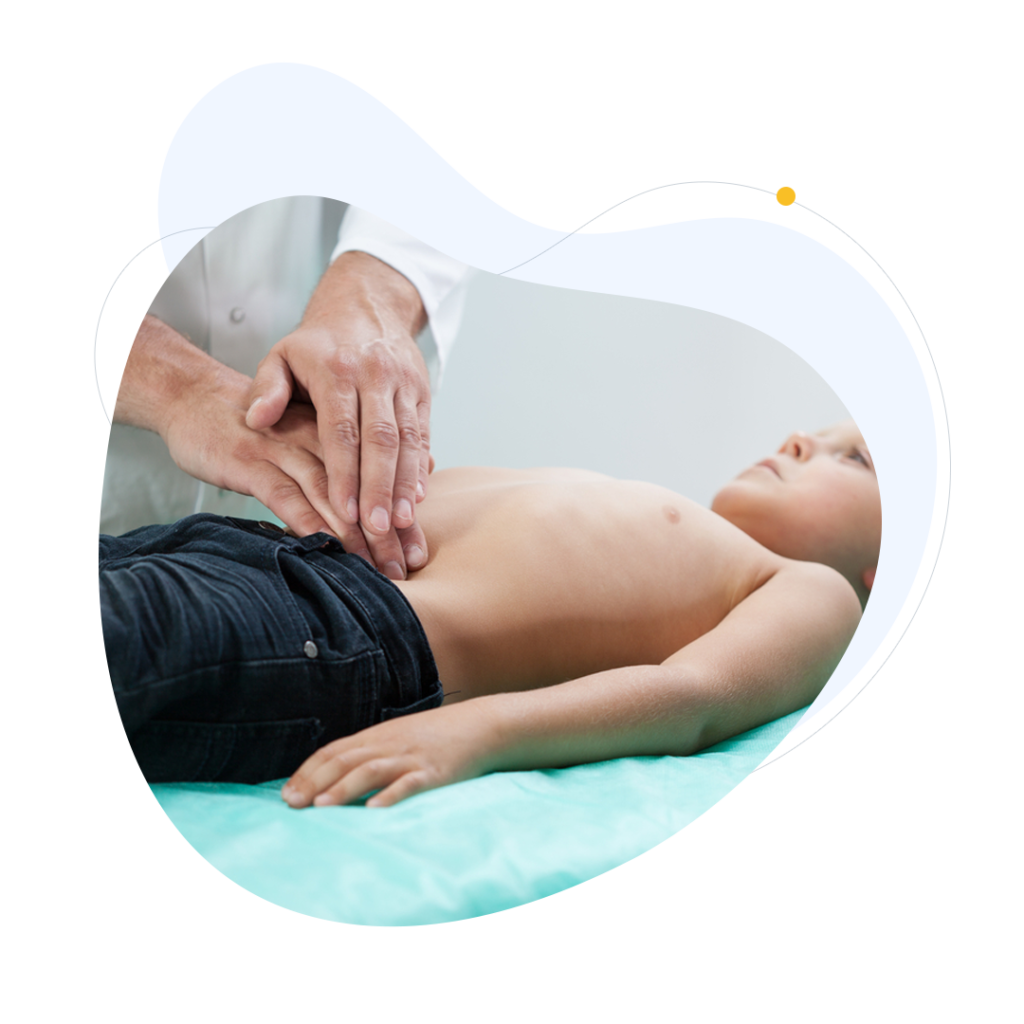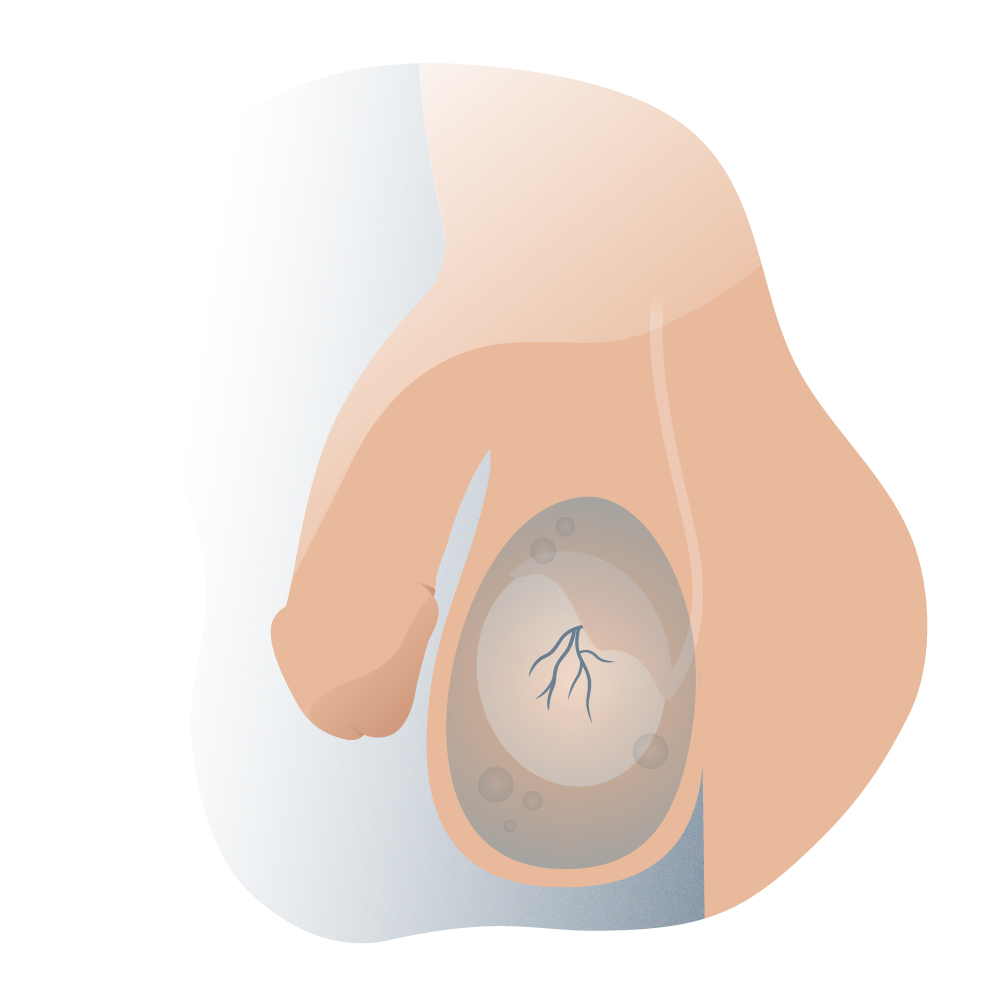Evaluación médica
Tipos diferentes de hidrocele
Es producido por un cierre incompleto de la túnica vaginal durante el desarrollo, manteniendo una comunicación con la cavidad peritoneal. Esto causa que el líquido fluya desde el abdomen hacia el escroto y viceversa.
Al examinarlo, se puede observar cómo esta acumulación de líquido puede aumentar de tamaño durante el llanto, la maniobra de Valsalva o el esfuerzo y fluctúa durante el día y la noche.
Generalmente, aparece en niños mayores de un año, después de una acción que ha aumentado su presión intraabdominal. No se cura espontáneamente, por esta razón la conducta es quirúrgica, ya que su persistencia podría alterar el testículo por compresión o convertirse en una hernia inguinoescrotal.
Es el hidrocele más frecuente, ocurre cuando la túnica vaginal se cierra con una gran cantidad de líquido de la cavidad peritoneal y no puede ser absorbido. Es típico del recién nacido, en la mayoría de los niños se cura espontáneamente antes del primer año de vida, ya que el líquido atrapado entre las dos capas del manto vaginal testicular es reabsorbido y no hay comunicación con la cavidad peritoneal.
Es un hidrocele idiopático, no tiene una causa conocida, se atribuye a un desequilibrio entre la capacidad de secreción y reabsorción de las capas visceral y parietal de la túnica vaginal; generalmente ocurre en adultos mayores.
Se produce como consecuencia de un evento traumático o infeccioso a nivel testicular, como: hernia inguinal, cirugía inguinal, Filariasis, epididimitis, orquitis y otras causas traumáticas.
Se forma por una persistencia muy delgada del conducto peritoneo vaginal, lo cual provoca una colección de líquido en el conducto inguinal, que no llega afectar el testículo. Clínicamente se observa como masa móvil, redonda, irreductible e indolora en la parte superior del escroto o en el canal inguinal, por lo general aparece en los primeros meses de vida, se recomienda una conducta expectante ya que suelen desaparecer espontáneamente.






 Son tres patologías testiculares pero que hacen referencia a condiciones totalmente distintas, cuando se habla de varicocele, es la dilatación y tortuosidad de las venas testiculares y por lo general está asociado a una disminuida capacidad reproductiva, el espermatocele, llamado también quiste espermático, y es una formación quística que por lo general contiene líquido y células espermáticas, es de carácter benigno y se forma en el epidídimo, finalmente el hidrocele viene siendo la acumulación de líquido entre la capa parietal y visceral de la túnica albugínea, asociado a un defecto en conducto peritoneo vaginal, pudiendo estar en comunicación o no con la cavidad abdominal.
A pesar de ser tres entidades distintas comparten síntomas y signos similares, como sensación de pesadez testicular, aumento de volúmen o asimetría testicular y leve dolor o molestias en la región escrotal.
Son tres patologías testiculares pero que hacen referencia a condiciones totalmente distintas, cuando se habla de varicocele, es la dilatación y tortuosidad de las venas testiculares y por lo general está asociado a una disminuida capacidad reproductiva, el espermatocele, llamado también quiste espermático, y es una formación quística que por lo general contiene líquido y células espermáticas, es de carácter benigno y se forma en el epidídimo, finalmente el hidrocele viene siendo la acumulación de líquido entre la capa parietal y visceral de la túnica albugínea, asociado a un defecto en conducto peritoneo vaginal, pudiendo estar en comunicación o no con la cavidad abdominal.
A pesar de ser tres entidades distintas comparten síntomas y signos similares, como sensación de pesadez testicular, aumento de volúmen o asimetría testicular y leve dolor o molestias en la región escrotal.  Posterior a una hidrocelectomía, se deben cumplir los cuidados postoperatorios y asistir al médico ante cualquiera de estos síntomas:
Posterior a una hidrocelectomía, se deben cumplir los cuidados postoperatorios y asistir al médico ante cualquiera de estos síntomas:
Andromedi pertenece a las organizciones médicas más destacadas en el sector de la Uro-Andrología